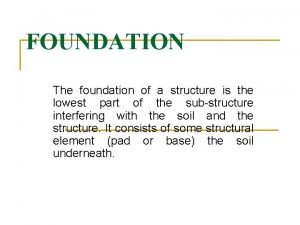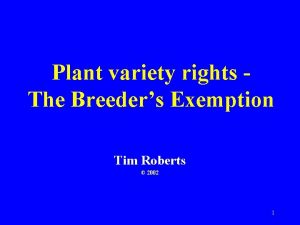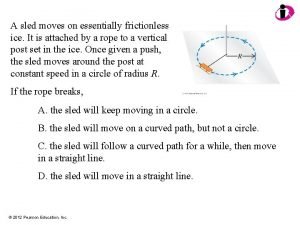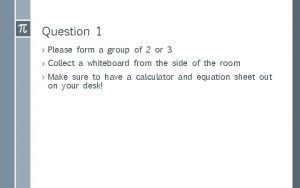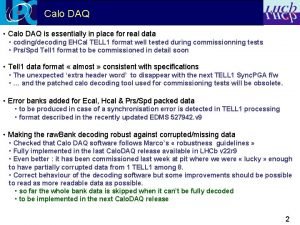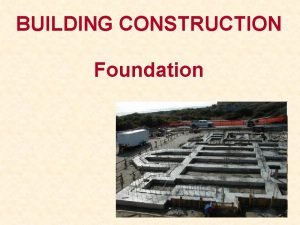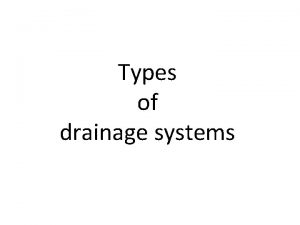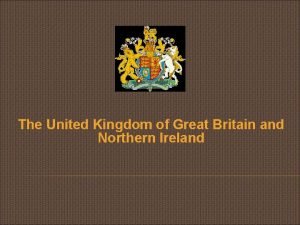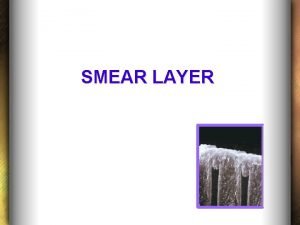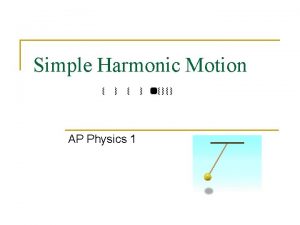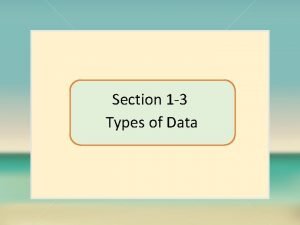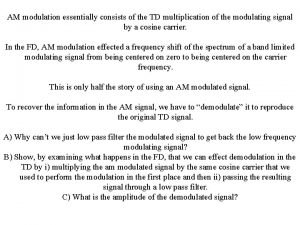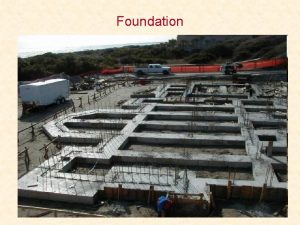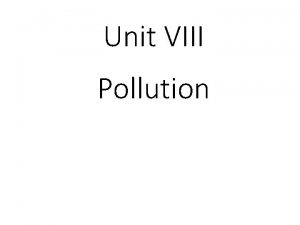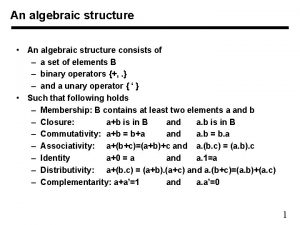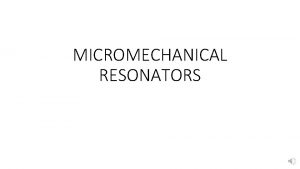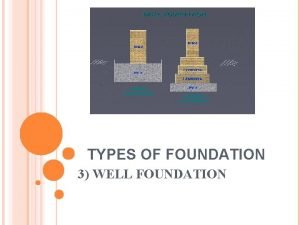FOUNDATION FOUNDATION INTRODUCTION A structure essentially consists of

























- Slides: 25

FOUNDATION

FOUNDATION

INTRODUCTION • A structure essentially consists of two parts, namely the super structure which is above the plinth level and the substructure which is below the plinth level. • Substructure is otherwise known as the foundation and this forms the base for any structure. • The soil on which the foundation rests is called the “foundation soil”.

OBJECTIVES OF A FOUNDATION • To distribute the total load coming on the structure on a larger area. • To support the structures. • To give enough stability to the structures against various disturbing forces, such as wind and rain. • To prepare a level surface for concreting and masonry work. • Provide stability against sliding

TYPES OF FOUNDATION • The two main types of foundation are : • Shallow foundation D≤ 1 m • Deep foundation D≥ 15 m • Types of Shallow foundation : • Isolated footing /Column footing • Combined footing • Wall footing/spread footing • Raft footing/mat footing • Types of Deep foundation : • Pile foundation • Pier foundation

Wall footing Footing provide under wall It may be simple or stepped footing Light loads-simple Heavy loads-stepped For simple footing width is 2 or 3 times b

Isolated footing

Isolated footing • Column footing is used to support isolated columns • It may be stepped or sloped • R C C footing is provided- when column loads are heavy • Thickness isolated footing depends– Load acting on column – Width of footing

Combined footing

Combined footing • A common footing constructed for 2 or more columns • It is provided when • the space between two columns is so small that the foundation for individual columns will overlap. • External column situated near boundary • Combined footing may be rectangular or trapezoidal

Combined footing • Rectangular – load acting on 2 columns are almost equal • Trapezoidal • Load acting on one of the column is heavy • One of the column is very near to boundary • Combined footings are proportioned in such a way that the centre of gravity of the loads coincides with the centre of gravity of the foundation. Hence these footings have either a trapezoidal or a rectangular shape.

Raft footing

Raft footing • It is a concrete slab which cover the entire area below the building and support all the walls n columns • If column loads are heavy-RCC slabs are provided

Raft footing • Mat footing is used in the following situations – When soil is soft clay or made up lands or marshy land with low bearing capacity – Building loads are heavy so that individual column footing may overlaps – Where there is a chance for differential settlement – It is used in highly compressible soil to reduce settlement – When columns are very close so that column footing cover more than half of the total area

PILE FOUNDATION

PILE FOUNDATION • Pile is a long vertical member used to transfer the load of structure to soil • It is a deep foundation used to transfer the heavy loads of building to hard bearing strata of good bearing capacity • Pile may be driven vertically or slightly inclined-battened pile • Foundation consist of pile- pile foundation

TYPES OF PILES • According to materials used • Concrete Piles – i) Cast-In-Situ Concrete Piles ii) Precast Concrete Piles • Steel Piles – i) H-Piles ii) Cylindrical piles iii) Tapered piles • Timber Piles • RCC piles • Composite Piles • According to load carrying capacity • Load bearing piles – End bearing piles – Friction piles • Non load bearing piles

Load Bearing Pile Friction Piles

• If a load bearing pile rest on hard strata and transfer the load through the tips- end bearing piles • When loose soil is extended to greater depth piles are driven to such a depth that friction between pile surface and surrounding soil will resist the load- Friction piles

End Bearing Pile & Friction Piles

Well foundation

• Well foundation is a type of deep foundation which is generally provided below the water level for bridges. • Box cassion: • It is open at the top and closed at the bottom and is made of timber, reinforced concrete or steel. This type of cassion is used where bearing stratum is available at shallow depth. • (ii) Open cassion (wells): • Open cassion is a box opened both at top and bottom. It is made up to either timber, concrete or steel. The open cassion is called well. Well foundation is the most common type of deep foundation used for bridges in India.

• (iii) Pneumatic cassions has its lower end designed as a working chamber in which compressed air is forced to prevent the entry of water and thus excavation can be done in dry conditions. • Shapes of Wells: • The common types of well shapes are: • (i) Single circular • (ii) Twin circular

• • • (iii) Dumb well (iv) Double-D (v) Twin hexagonal (vi) Twin octagonal (vii) Rectangular.

 A grillage foundation is essentially a
A grillage foundation is essentially a Essentially derived variety
Essentially derived variety What is essentially a structured conversation
What is essentially a structured conversation A sled moves on essentially frictionless ice
A sled moves on essentially frictionless ice A rocket initially at rest is fired vertically
A rocket initially at rest is fired vertically Jean jacques rousseau nature vs nurture
Jean jacques rousseau nature vs nurture Essentially full of artistry of greek literature
Essentially full of artistry of greek literature Renewable energy sources are essentially inexhaustible
Renewable energy sources are essentially inexhaustible Renewable energy sources are essentially inexhaustible
Renewable energy sources are essentially inexhaustible A sled moves on essentially frictionless ice
A sled moves on essentially frictionless ice Target market departmentalization
Target market departmentalization Body paragraph structure
Body paragraph structure Pad foundation section
Pad foundation section Composition of urine slideshare
Composition of urine slideshare Introduction of foundation
Introduction of foundation Steining of well
Steining of well Foundation of organization structure
Foundation of organization structure Physics 1
Physics 1 Bierocks recipe
Bierocks recipe A network consists of
A network consists of Two pipe system drainage
Two pipe system drainage Great britain consists of three parts
Great britain consists of three parts The human genome consists of
The human genome consists of Smear layer in operative dentistry ppt
Smear layer in operative dentistry ppt A slingshot consists of a light leather cup
A slingshot consists of a light leather cup Statistic vs parameter example
Statistic vs parameter example
